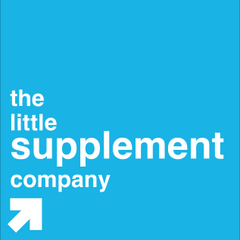Sports Nutrition - an insight into our energy system
Posted by Mark Hamilton on
SPORTS NUTRITION
Whether you are an athlete, a weekend warrior, a body builder or simply wanting to lose a few extra pounds, the foods and nutritional supplements that you choose may significantly a ect your physical activity. Exercise places various demands on the body such as an increased need for flexibility and joint support, as well as increasing free radical production. Various innovative supplements suitable for athletes, sports enthusiasts and those wishing to improve their body composition and specifically support their nutritional needs are available at the little supplement company.
Regardless of the type of sport or activity there are three key considerations that can be taken into account: how to fuel an activity, how to optimise or enhance performance and how to recover following exercise.
Energy to participate in sport comes from the food we eat via a process known as metabolism and is dependent on the digestion and assimilation of nutrients which are all required for the production of a compound called Adenosine Triphosphate (ATP).
ATP is produced inside the human cell with the majority of production occurring in organelles known as mitochondria. The number of mitochondria in cells is highly variable, but in metabolically active muscle cells, like those found within cardiac muscle, they are larger and number many thousands.
When carbohydrates, fats and proteins are consumed they are digested and broken down into smaller components such as glucose, fatty acids and amino acids via the digestive system. Once in the blood stream these components will enter tissue cells where they are then utilised in a process known as cellular respiration.
ATP can be produced in the body via several mechanisms depending on the type of activity an individual is participating in. An individual who is partaking in a 100 meter sprint or a dead lift will be using stored ATP, derived from creatine phosphate via the phosphagen system and anaerobic (without oxygen) glycolysis of muscle glycogen. However this only produces enough energy for a very short duration.
For a longer distance endurance activities, energy from the electron transport chain comes into play but because ATP is produced more slowly through this method than by glycolysis, the pace of the activity will be a lot slower.
Running a marathon requires a combination of fuels. Muscle glycogen will be used to provide energy but stored liver glycogen will also be utilised. However even this will not provide enough ATP for such a gruelling event and therefore the body will also utilise fatty acids which can provide much larger numbers of ATP via a process known as beta oxidation. Endurance athletes develop their ability to utilise this system, which spares precious glycogen fuel stores when racing and helps prevent ‘hitting’ the wall.
All of these processes place various demands on the body and are dependent on both adequate macro and micronutrient intake prior to, during and after exercise to enable recovery. For example various co-factor nutrients such as vitamins B1, B2, B3, B5, B6, B12 and biotin as well as the minerals iodine, iron and magnesium contribute to normal energy-yielding metabolism.
Aerobic metabolism such as beta oxidation specifically requires the amino acid carnitine.
Muscle recovery relies on adequate protein intake including branched chain amino acids (leucine, isoleucine and valine).
Research suggests that various ingredients with anti-inflammatory properties such as omega-3 fatty acids and specific botanicals such as boswellia may be supportive for inflammation following exercise.
So don't forget the basics, get a quality multivitamin and essential fatty acid.
